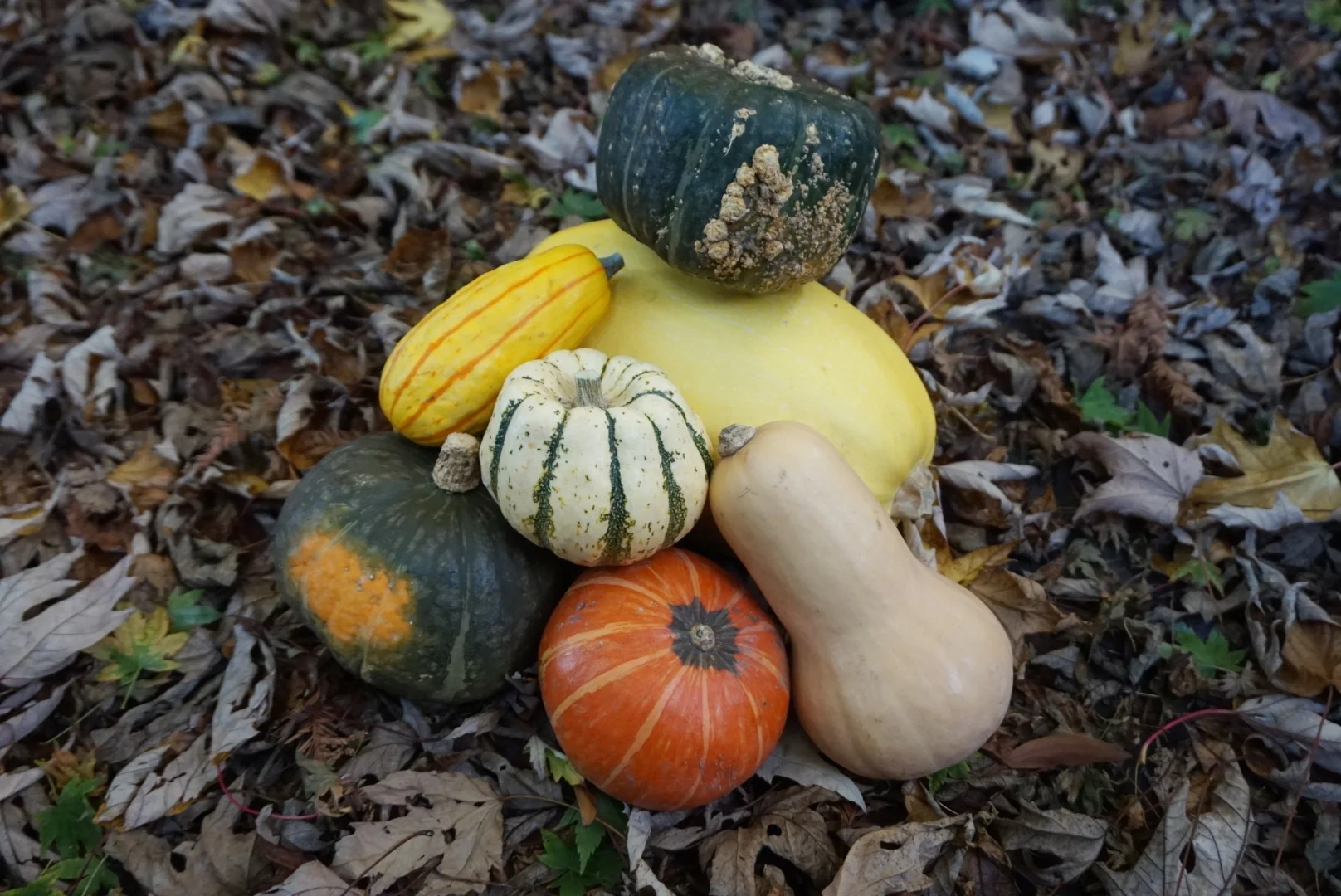Fall Squash Have Arrived in Full Force, Horray!
Fall squash (aka winter squash, but officially it's still fall time!) are AWESOME natural foods. They contain high amounts of vitamins A and C, as well as minerals like iron, magnesium, potassium and zinc. They're also packed with antioxidants, fiber, and good old omega 3 fatty acids.
Still, as fantastic as squash are, many people seem intimidated when it comes to preparing them. Perhaps it's their extreme denseness or tough outer skin that can make them feel more like a weapon than a delicacy. Either way, it's in your best interest to get on board with the fall squash train for several reasons.
Here's my top seven:
-Squash have a very long natural shelf life. They can sit for months on your counter top-- long outlasting nearly every other food (take that, you prima donna avocados!). This means you can stock up at farmers market (look for squash that are heavy for their size) without worrying about them going bad. Great for people who travel, have sporadic schedules, and yeah, just about everyone. For longer storage, keep them in a cool, dark place.
-They make gorgeous table centerpieces and seasonal displays (and they're environmentally friendly decorations!). Grandma would be proud.
-Fall squash satisfy a sweet tooth. They are naturally sweet tasting to varying degrees (some are like dessert!). This can be a great resource when working to curb sugar cravings-- proactively include sweet veggies in your diet to satisfy cravings without going ham or breaking a whole foods based diet.
-Squash are often reasonably priced (in California they average $1.50/pound for organic). This means you can feed two for just a few dollars! Or get a massive one for $6-$8 and freeze extra (#foodprepqueen).
-They're easy enough to prepare. For a standard roast, your prep time may only take about 10 minutes, (then ~40 to cook). Follow preparation instructions below with confidence. First time? Fake it til you bake it, sista.
-They freeze well. Some foods don't hold up so well once thawed (think slimy lettuce or brown avocado-- nasty!). With squash you can definitely cook a big one and freeze all the extra without funking up the taste or texture.
-They support your whole foods/ gluten-free endeavor. Many people find they feel better removing gluten from their diets-- but everyone wants a more starch-heavy meal every now and then! Enter squash. Spaghetti squash in particular is a rad replacement to use in traditional pasta dishes. Also a great food to prepare for guests or bring to potlucks/parties because most everyone can enjoy it.
PREPARATION INSTRUCTIONS
All fall squash need to be cooked. They cook longer than summer squash (like zucchinis) due to their hard, thick skin. Some fall squash have edible skins (like delicata squash), though most do not. I find squash are perfect for roasting in the oven (love how you just throw them in and walk away!), though they do take some time to bake so don't wait til you're hangry to start cooking.
Most fall squash can be prepared as follows:
Bake:
-Cut squash in half and scoop out seeds. Place face-up on baking trays (they can lose their juices if face down). Butter or oil up top sides and sprinkle salt and any desired seasonings (sometimes I'll make one side savory (thyme, sage, rosemary, etc.) and the other side sweet (cinnamon, stevia, vanilla, dash of maple syrup, etc)!). Bake at 350 degrees for 30 mins, then check. Squash is finished when it can be pierced with a fork easily. Add a little water to your baking tray before cooking for a steaming/hydrating effect. You can also chop squash into slices or cubes before roasting (cooks much faster).
Steam:
-Cut in half and scoop out seeds. Steam halves face down in basket 15-20 mins or so (longer than average steamed vegetable). You can also chop squash into pieces first and steam the chunks (cooks faster).
Saute:
-Cut squash into smaller chunks and saute with oil or even a bone broth for savory goodness.
Blend:
-Turn your squash into a creamy soup, puree, sauce, filling, or even "mashed potatoes" dish by simply adding your cooked squash to the blender or food processor (or use a hand masher)
Stuff:
-What's small, cute and packed with amazingness?-- stuffed squash! It's especially darling with acorn or buttercup squash (and these smaller squash make a perfect single size portion), but you can really do this with any variety. Cut off top (or for squash that lay on their sides, cut in half). Scoop out seeds and stuff with anything you want! Try greens like kale or spinach, meats like sausage, bacon or ground lamb, grains, cheeses, nuts, other veggies, and seasonings. You can also scoop out the squash meat and mix with stuffing ingredients, then restuff squash rind. Endless options!
In Curries or Stews:
-Fall squash is often used in Indian curry dishes. The sweetness pairs well with the curry kick for sure. You can also try adding it to chili (again, sweetness with a little spice sure is nice!) or other soups and stews.
SQUASH CUTTING TIPS:
-Use a sharp ass knife. You're more likely to cut yourself fumbling a dull one.
-Slice off top and bottom of squash. Stand squash up on newly cut end (make sure to cut it evenly, such that the squash will stand-up alone). Approach squash from top, with knife blade parallel to squash surface (not knife point down). Make one solid cut down the middle, utilizing your body weight and effectively cutting your squash in half. Much easier than struggling to stab your squirmy squash as it rolls off the counter. I know from experience.
I hope this inspires you to get squashy this fall!
Getting in touch with seasonal foods (and my oven) has radically transformed my life. I sure understand how trying new foods can sometimes feel like a crapshoot, especially when the new veg is rock hard and covered in warts! (cute and endearing?) But ooohhhhhh is it worth it! Try it out and let me know in the comments below what you think!

